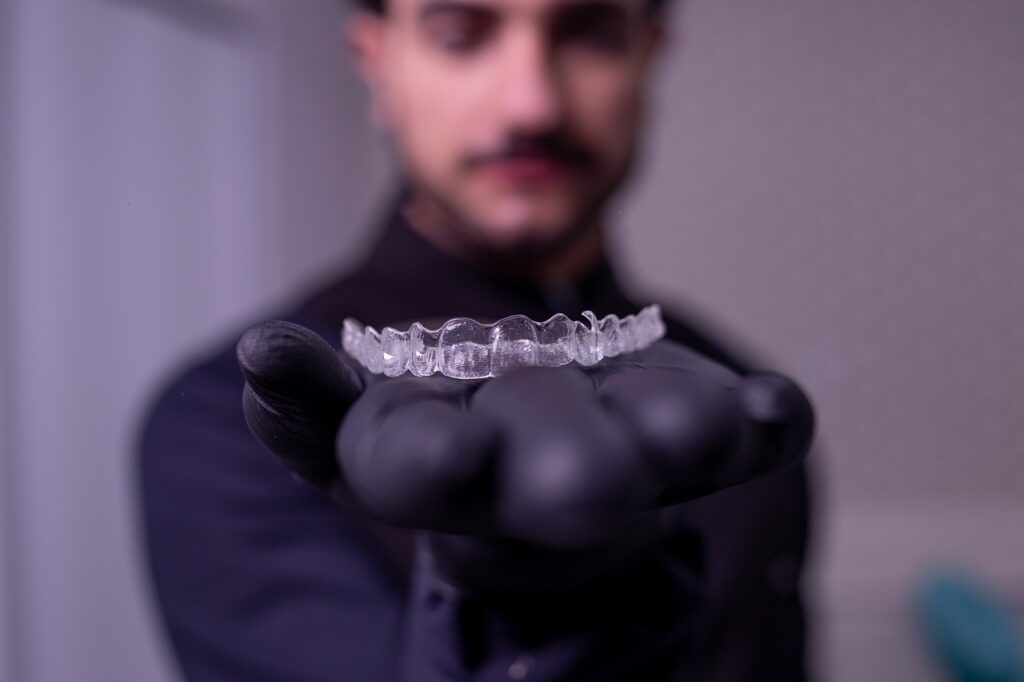Orthodontic treatments, primarily categorized into three types – traditional metal braces, Invisalign clear aligners, and lingual braces, play a pivotal role in correcting dental deformities and enhancing aesthetic appeal. While traditional braces have been the conventional choice, the advent of Invisalign and lingual braces has given rise to a paradigm shift in orthodontic treatment options. Each type, marked by its distinct design, material, and functionality, caters differently to individual requirements and preferences. To make an informed decision, one must first understand the nuances of each type, as they have their own pros and cons.
Traditional Metal Braces
The patient’s journey to a perfect smile often begins with traditional metal braces. These have been the gold standard in orthodontic treatment for many years due to their proven effectiveness. The braces materials typically consist of high-grade stainless steel brackets that are bonded to the front surface of the teeth, along with a metal wire that threads through these brackets.
Traditional metal braces are versatile and capable of correcting a wide range of orthodontic issues, from simple misalignment to complex malocclusion. The treatment duration varies depending on the severity of the patient’s condition, with most treatments lasting between 18 months to 3 years.
Despite their visibility, metal braces have evolved over the years, becoming smaller, less conspicuous, and more comfortable. Recent innovations have also enabled the customization of the brackets and wires, which can be shaped and adjusted to suit the unique needs of each patient.

Invisalign Clear Aligners
Shifting focus to another popular option in orthodontic treatments, Invisalign clear aligners stand as a revolutionary alternative to traditional braces. Known for their aesthetic appeal and comfort, Invisalign aligners offer a seamless solution for ideal teeth alignment.
Invisalign benefits extend beyond their barely visible appearance. Made from a flexible, BPA-free plastic, these aligners are custom-made to fit your teeth perfectly, ensuring comfort throughout the treatment process. Unlike traditional braces, they can be easily removed for eating, drinking, brushing, and flossing, making oral hygiene maintenance more manageable.
The treatment process for Invisalign involves a series of clear aligners that gradually shift your teeth into the desired position. The patient will wear each set of aligners for 1-2 weeks, for 20 to 22 hours a day, before moving on to the next in the series. Regular check-ups are typically scheduled every six weeks to monitor progress.
In terms of effectiveness, Invisalign can treat a wide range of orthodontic issues including crowding, spacing, overbite, underbite, and crossbite. However, it is important to highlight that the success of this treatment heavily relies on the patient’s commitment to wearing the aligners as recommended.
Lingual Braces Overview
Ever considered an orthodontic solution that is as effective as traditional braces but virtually invisible? Lingual braces could be the answer. These unique dental appliances are affixed to the back of your teeth, making them a discreet option for those conscious about their appearance during orthodontic treatment.
Lingual braces offer numerous advantages: – They are virtually invisible, providing a cosmetic advantage for those who want to improve their smile without obvious metal braces. – They are custom-fitted to each patient, ensuring maximum comfort and effectiveness. – Despite being positioned on the inside of the teeth, they are just as effective in correcting misalignments as traditional braces.
Despite these lingual brace advantages, there are several factors to consider. Primarily, lingual braces may initially cause some speech and eating difficulties until you get used to them. Additionally, lingual brace costs are typically higher than traditional braces due to the customization and specialized installation required.
Frequently Asked Questions
What Is the Average Cost of Orthodontic Treatments?
The average cost of orthodontic treatments varies widely, depending on the complexity of the case. Insurance coverage and financing options can greatly offset these costs, making treatments more affordable for many patients.
Are Orthodontic Treatments Painful?
Orthodontic treatments may cause some discomfort initially, often described as pressure rather than pain. Braces discomfort is typically manageable and subsides within a few days. Pain management options can include over-the-counter analgesics or orthodontic relief wax.
How Long Do Orthodontic Procedures Usually Take?
Orthodontic procedure duration varies based on individual cases. Factors influencing this include complexity of the dental issue, treatment method chosen, and patient compliance. Generally, treatments range from six months to three years. Consultation with a specialist is advised.
Can Adults Undergo Orthodontic Treatments or Are They Only for Kids?
Absolutely, adults can undergo orthodontic treatments. Adult braces are a viable solution for correcting dental alignment issues. There are various treatment options available, each tailored to individual needs and lifestyle considerations.
Do Orthodontic Treatments Affect Speech or Eating Habits?
Orthodontic treatments can initially impact speech and require eating adjustments. However, these effects are temporary. Over time, patients often experience speech improvement and regain normal eating habits as they adapt to their orthodontic appliances.
